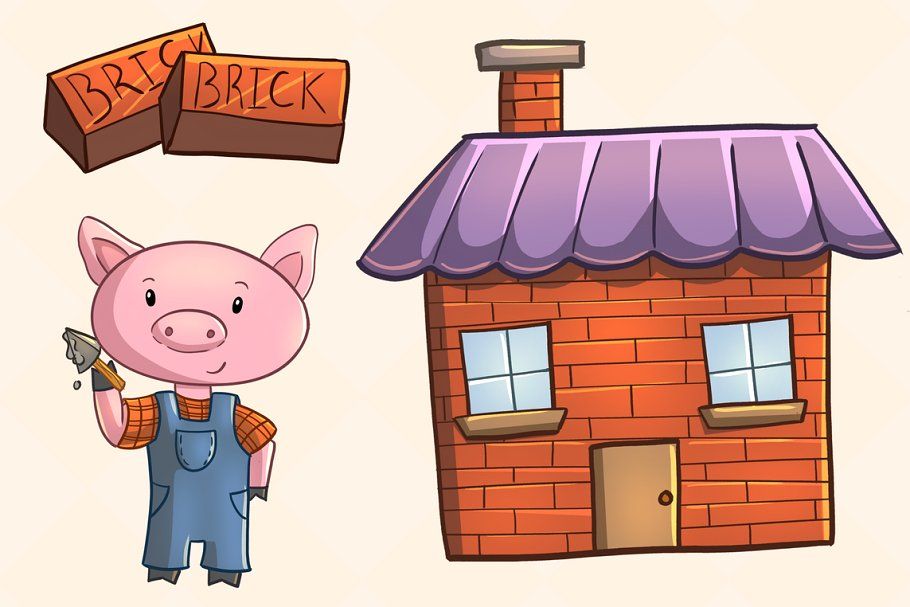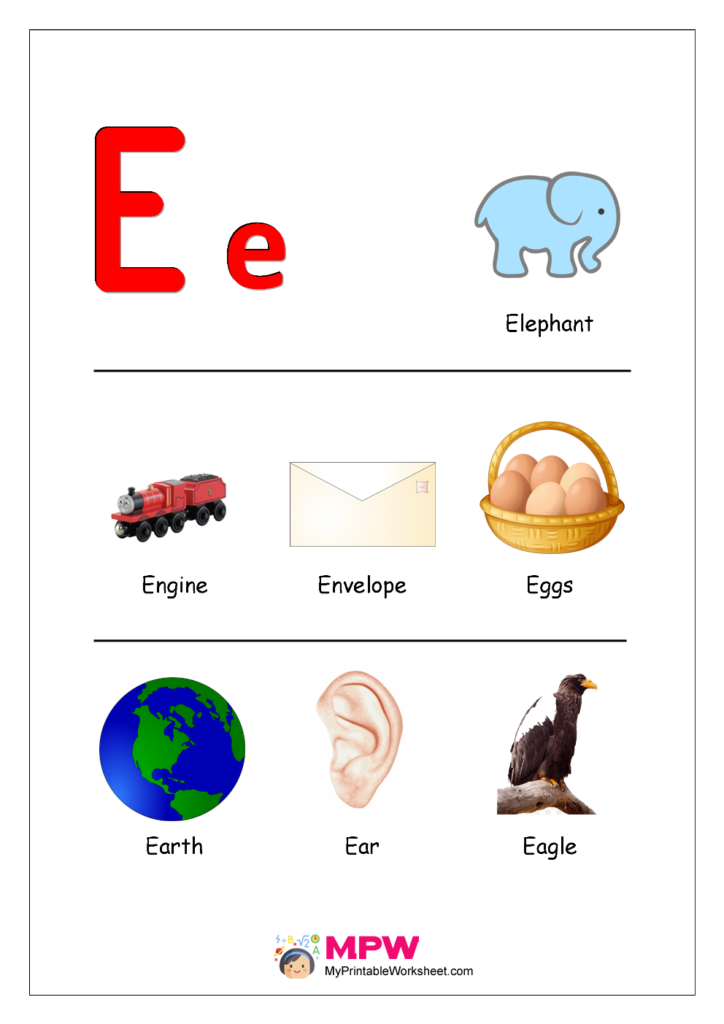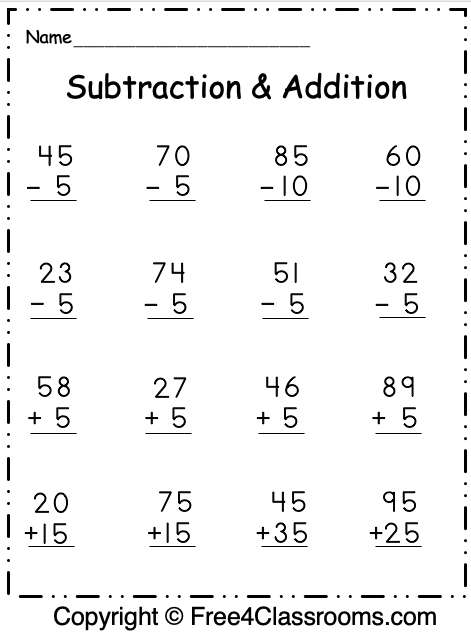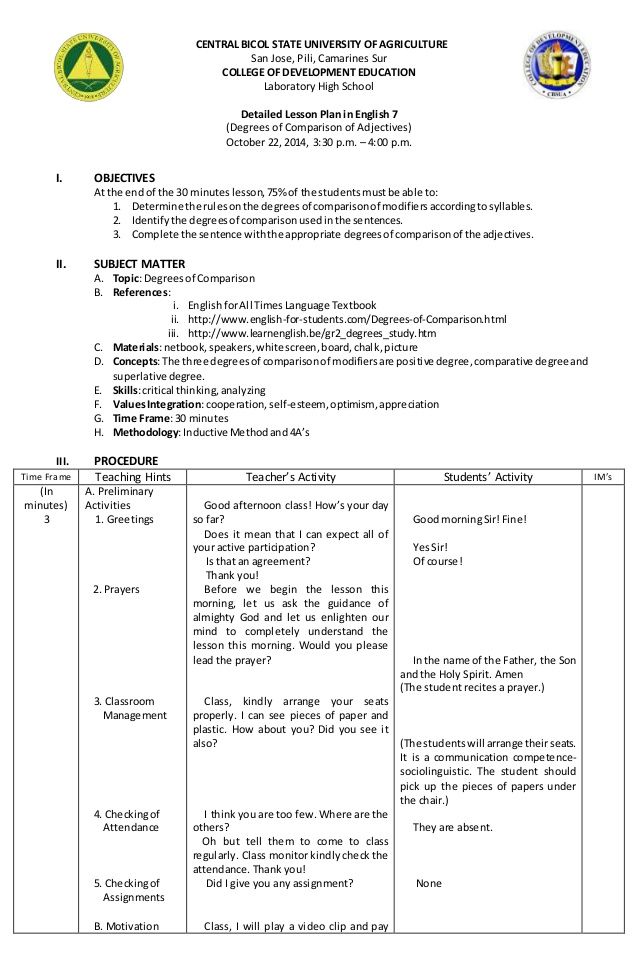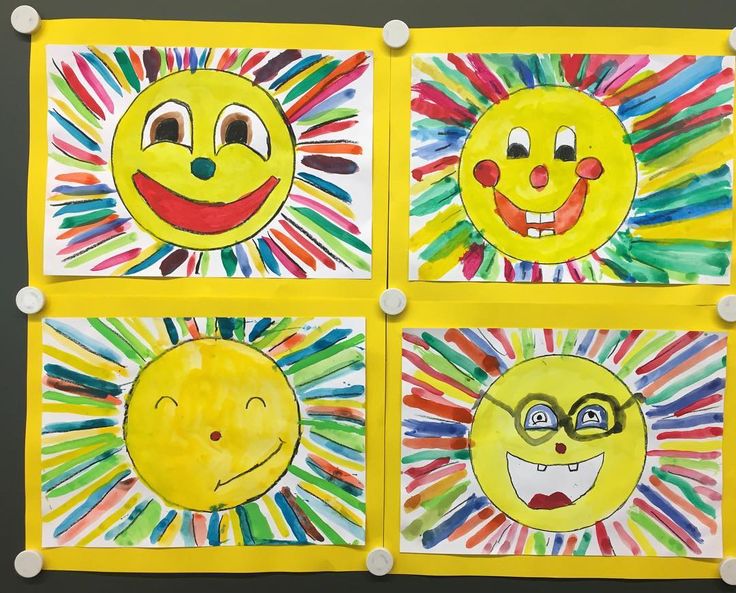Who wrote three little pigs
The Three Little Pigs
"The Three Little Pigs" is a fairy tale that children become familiar with at an early age. It is a fable because it has a moral message and involves animals. The story conveys warnings about laziness and advocates building strong shelters and not settling for cheap materials. There are multiple versions of the story involving three pigs being hunted by a wolf.
The story was first seen in English fairy tale books from the 19th century. It is on our list of classic children's short stories.
In the familiar tale three little pigs are sent off into the world by their mother. Each pig builds a house. One builds a house of straw, one builds a house of sticks and one builds a far more sturdy house made of brick.
When a wolf comes after the picks he asks each pig to let him inside. The pigs refuse saying, "not by the hair on my chinny chin chin." The wolf then threatens, "Then I'll huff, and I'll puff, and I'll blow your house down." The wolf easily blows down the homes made of straw and sticks, but is unable to blow down the stronger and better made brick house.
The first two pigs are eaten in the earliest versions of the tale. Only the third brick-laying pig survives. The first two pigs do not always die in some of the more recent versions of the tale. In some versions the pigs even end up eating the wolf.
There are multiple morals in this story. It illustrates the importance of hard work. It is worth the time and effort to build something good. The straw using pig says in the story that he will use the straw so he can do less work and have more time to relax. The pig was lazy and made a fatal error in judgement.
It also directly illustrates the importance of building a sturdy structure. The wolf could just as easily be a tornado or wind storm with the homes representing the types of homes people could build. A weak house would not be able to withstand some of the powerful storms England has received over the past couple centuries. A straw or stick house would be no match for a tornado.
Origins
"The Three Little Pigs" story was first published in The Nursery Rhymes of England by James Halliwell-Phillips in 1886 according to the Wikipedia entry.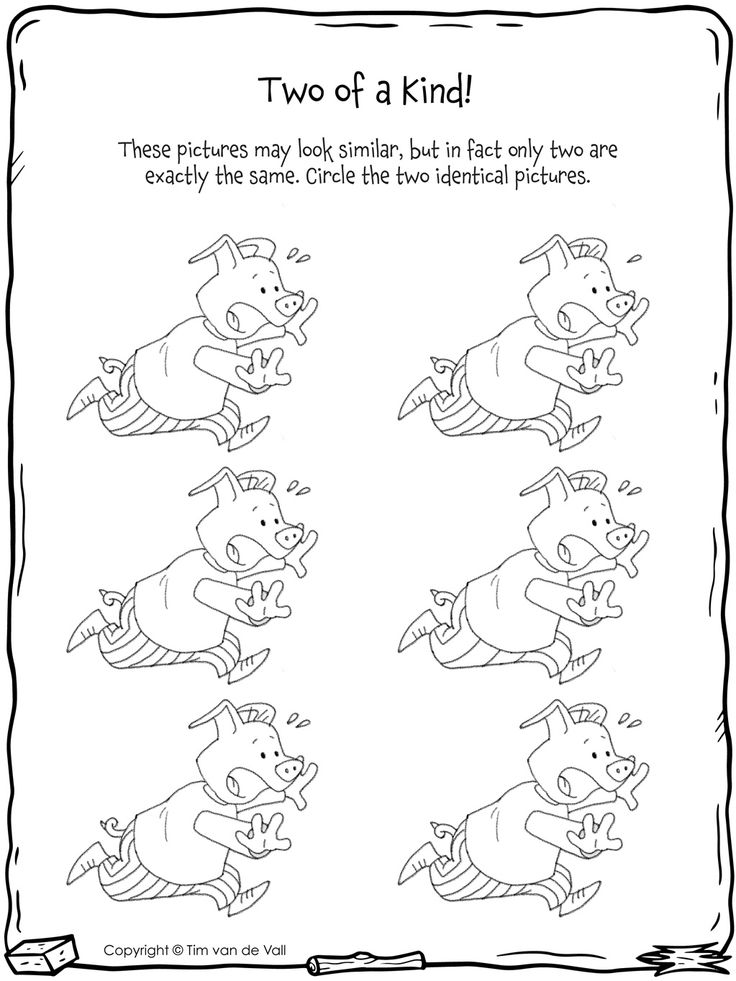 It was then published in English Fairy Tales by Joseph Jacobs in 1890. The tale likely predates these books and as with many fairy tales the original author is unknown.
It was then published in English Fairy Tales by Joseph Jacobs in 1890. The tale likely predates these books and as with many fairy tales the original author is unknown.
Later Versions
Classification and Similar Tales
"The Three Little Pigs" is classified as ATU 124 under the Aarne-Thompson-Uther Classification of Folk Tales. It fits into the "Wild Animals and Domestic Animals" folk tales category. You can view more tales that fall with this category here. There have been many stories that are similar to "The Three Little Pigs." Several of them are described here on SurLaLune.
"The Three Little Pigs" Online
 gov: The Story of the Three Little Pigs
gov: The Story of the Three Little Pigs
Hardcover
There are many versions of "The Three Little Pigs" tale in bookstores. The book pictured above was illustrated by Mei Matsuoaka (Parragon Books) and can be found on Amazon.com.
The Three Little Pigs
The story of The Three Little Pigs featured here has been adapted from different sources and from childhood memory. The primary sources are English Fairy Tales, retold by Flora Annie Steel (1922) with illustrations by L. Leslie Brooke from the 1904 version. This story is featured in our Favorite Fairy Tales and Children's Stories.
Once upon a time there was an old mother pig who had three little pigs and not enough food to feed them. So when they were old enough, she sent them out into the world to seek their fortunes.
The first little pig was very lazy. He didn't want to work at all and he built his house out of straw.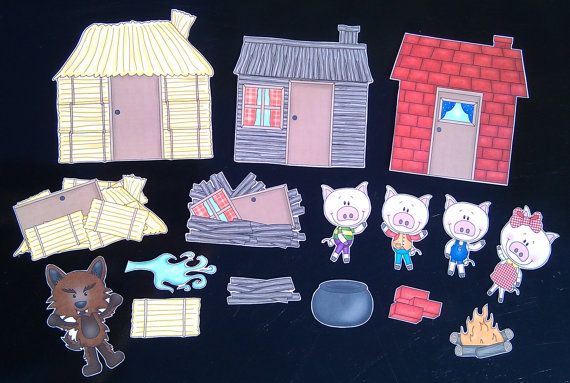 The second little pig worked a little bit harder but he was somewhat lazy too and he built his house out of sticks. Then, they sang and danced and played together the rest of the day.
The second little pig worked a little bit harder but he was somewhat lazy too and he built his house out of sticks. Then, they sang and danced and played together the rest of the day.
The third little pig worked hard all day and built his house with bricks. It was a sturdy house complete with a fine fireplace and chimney. It looked like it could withstand the strongest winds.
The next day, a wolf happened to pass by the lane where the three little pigs lived; and he saw the straw house, and he smelled the pig inside. He thought the pig would make a mighty fine meal and his mouth began to water.
So he knocked on the door and said:
Little pig! Little pig! Let me in! Let me in!
But the little pig saw the wolf's big paws through the keyhole, so he answered back:
No! No! No! Not by the hairs on my chinny chin chin!
Then the wolf showed his teeth and said:
Then I'll huff and I'll puff and I'll blow your house down.
So he huffed and he puffed and he blew the house down! The wolf opened his jaws very wide and bit down as hard as he could, but the first little pig escaped and ran away to hide with the second little pig.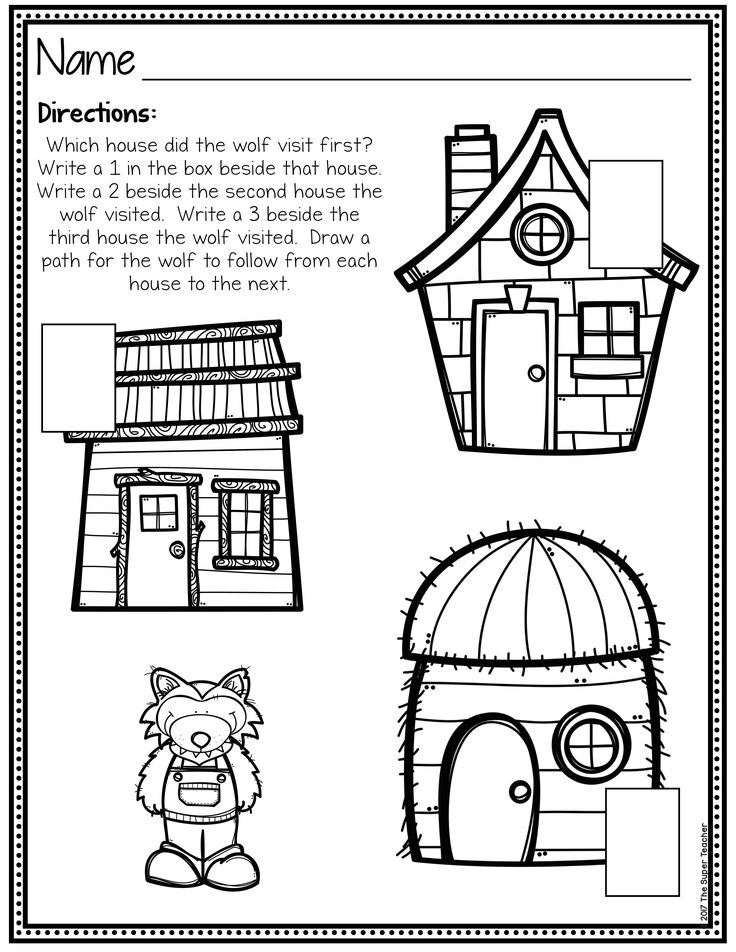
The wolf continued down the lane and he passed by the second house made of sticks; and he saw the house, and he smelled the pigs inside, and his mouth began to water as he thought about the fine dinner they would make.
So he knocked on the door and said:
Little pigs! Little pigs! Let me in! Let me in!
But the little pigs saw the wolf's pointy ears through the keyhole, so they answered back:
No! No! No! Not by the hairs on our chinny chin chin!
So the wolf showed his teeth and said:
Then I'll huff and I'll puff and I'll blow your house down!
So he huffed and he puffed and he blew the house down! The wolf was greedy and he tried to catch both pigs at once, but he was too greedy and got neither! His big jaws clamped down on nothing but air and the two little pigs scrambled away as fast as their little hooves would carry them.
The wolf chased them down the lane and he almost caught them. But they made it to the brick house and slammed the door closed before the wolf could catch them.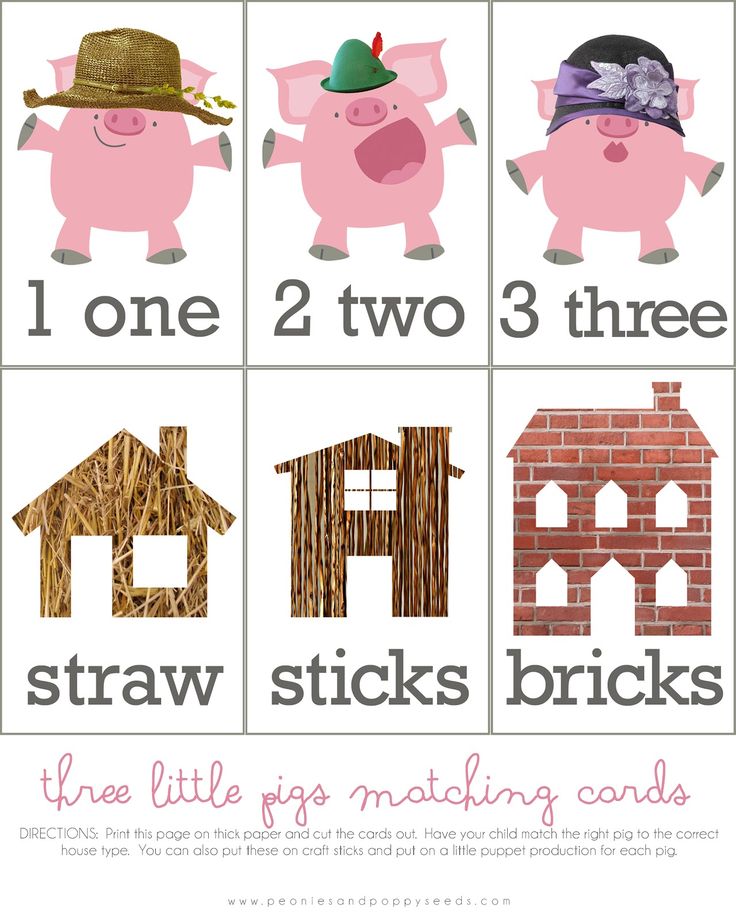 The three little pigs they were very frightened, they knew the wolf wanted to eat them. And that was very, very true. The wolf hadn't eaten all day and he had worked up a large appetite chasing the pigs around and now he could smell all three of them inside and he knew that the three little pigs would make a lovely feast.
The three little pigs they were very frightened, they knew the wolf wanted to eat them. And that was very, very true. The wolf hadn't eaten all day and he had worked up a large appetite chasing the pigs around and now he could smell all three of them inside and he knew that the three little pigs would make a lovely feast.
So the wolf knocked on the door and said:
Little pigs! Little pigs! Let me in! Let me in!
But the little pigs saw the wolf's narrow eyes through the keyhole, so they answered back:
No! No! No! Not by the hairs on our chinny chin chin!
So the wolf showed his teeth and said:
Then I'll huff and I'll puff and I'll blow your house down.
Well! he huffed and he puffed. He puffed and he huffed. And he huffed, huffed, and he puffed, puffed; but he could not blow the house down. At last, he was so out of breath that he couldn't huff and he couldn't puff anymore. So he stopped to rest and thought a bit.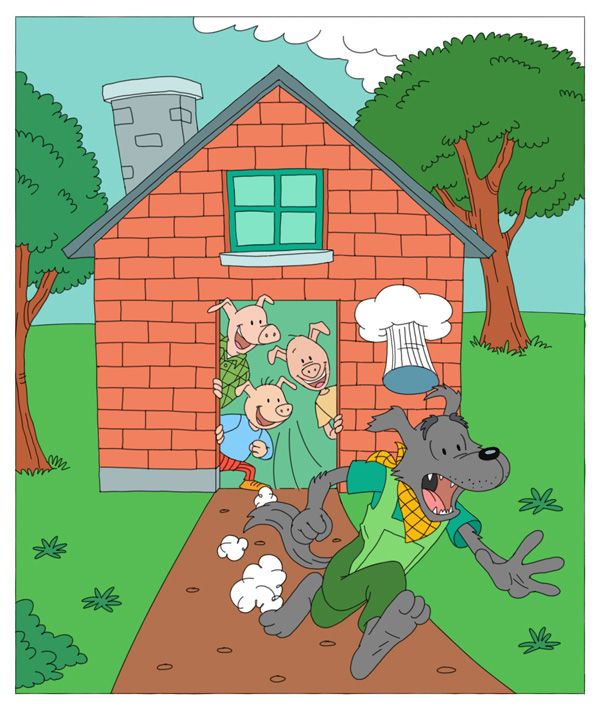
But this was too much. The wolf danced about with rage and swore he would come down the chimney and eat up the little pig for his supper. But while he was climbing on to the roof the little pig made up a blazing fire and put on a big pot full of water to boil. Then, just as the wolf was coming down the chimney, the little piggy pulled off the lid, and plop! in fell the wolf into the scalding water.
So the little piggy put on the cover again, boiled the wolf up, and the three little pigs ate him for supper.
If you enjoyed this story, you may be interested in our collection of Children's Stories or other titles from our library of Pre-K Read-Aloud Stories.
Three little pigs. Read online. English folk tale, edited by Sergei Mikhalkov
Tales
Printable version
Page. 1 || Page 2
Once upon a time there were three little pigs in the world. Three brothers. All of the same height, round, pink, with the same cheerful ponytails.
All of the same height, round, pink, with the same cheerful ponytails.
Even their names were similar. The piglets were called: Nif-Nif, Nuf-Nuf and Naf-Naf.
All summer they tumbled in the green grass, basked in the sun, basked in the puddles.
But autumn has come.
The sun was not so hot anymore, gray clouds stretched over the yellowed forest.
“It's time for us to think about winter,” Naf-Naf once said to his brothers, waking up early in the morning. - I'm shivering from the cold. We may catch a cold. Let's build a house and winter together under one warm roof.
But his brothers didn't want to take the job. It is much more pleasant to walk and jump in the meadow on the last warm days than to dig the earth and carry stones.
- Good luck! Winter is still far away. We'll take a walk, - said Nif-Nif and rolled over his head.
— When necessary, I will build a house for myself, — said Nuf-Nuf and lay down in a puddle.
“Me too,” added Nif-Nif.
- Well, as you wish. Then I will build my own house, - said Naf-Naf. “I won't wait for you.
It was getting colder and colder every day. But Nif-Nif and Nuf-Nuf were in no hurry. They didn't even want to think about work. They were idle from morning to evening. All they did was play their pig games, jump and roll.
“Today we will take a walk,” they said, “and tomorrow morning we will get down to business.
But the next day they said the same thing.
And only when a large puddle near the road began to be covered with a thin crust of ice in the morning, the lazy brothers finally set to work.
Nif-Nif decided that it would be easier and most likely to make a house out of straw. Without consulting anyone, he did just that. By evening, his hut was ready.
Nif-Nif put the last straw on the roof and, very pleased with his house, sang merrily:
You'll get around half the world,
You'll get around, you'll get around,
You won't find a better home,
You won't find it, you won't find it!
Singing this song, he went to Nuf-Nuf.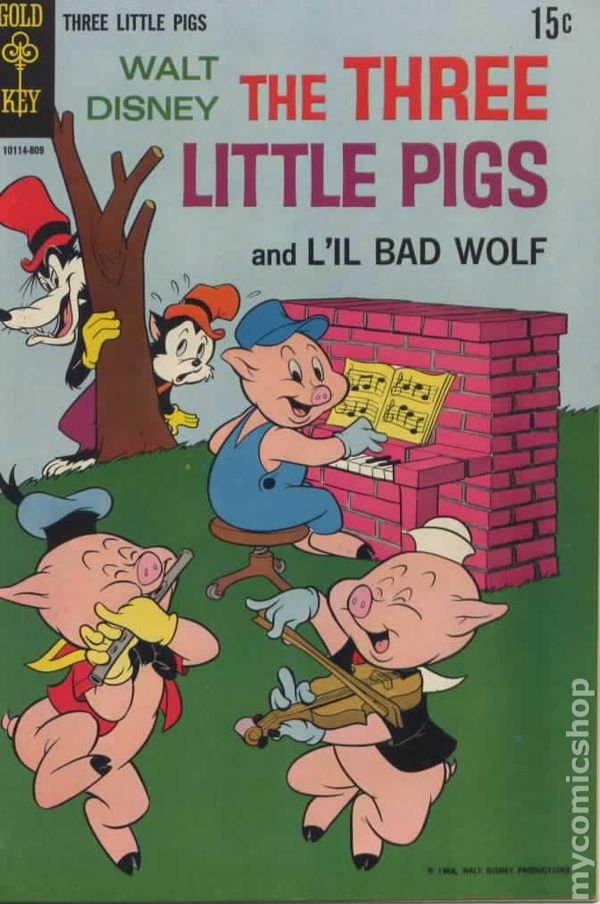
Nuf-Nuf was also building a house not far away.
He tried to put an end to this boring and uninteresting business as soon as possible. At first, like his brother, he wanted to build a house out of straw. But then I decided that it would be very cold in such a house in winter. The house will be stronger and warmer if it is built from branches and thin rods. And so he did.
He drove stakes into the ground, intertwined them with rods, heaped dry leaves on the roof, and by evening the house was ready.
Nuf-Nuf proudly walked around him several times and sang:
I have a good house,
A new house, a solid house.
I'm not afraid of rain and thunder,
Rain and thunder, rain and thunder!
Before he could finish the song, Nif-Nif ran out from behind a bush.
— Well, your house is ready! - said Nif-Nif to his brother. "I told you we'd get it over with quickly!" Now we are free and can do whatever we want!
— Let's go to Naf-Naf and see what kind of house he built for himself! - said Nuf-Nuf. "We haven't seen him in a long time!"
"We haven't seen him in a long time!"
- Let's go and see! Nif-Nif agreed.
And both brothers, very pleased that they had nothing to worry about, hid behind the bushes.
Naf-Naf has been busy building for several days now. He dragged stones, kneaded clay, and now slowly built himself a reliable, durable house in which one could hide from wind, rain and frost.
He made a heavy oak door with a bolt in the house so that the wolf from the neighboring forest could not climb into it.
Nif-Nif and Nuf-Nuf found their brother at work.
— What are you building? - the surprised Nif-Nif and Nuf-Nuf shouted in one voice. - What is it, a pig house or a fortress?
- Piglet's house should be a fortress! Naf-Naf calmly answered them, continuing to work.
— Are you going to fight with someone? Nif-Nif grunted merrily and winked at Nuf-Nuf.
And both brothers were so merry that their squeals and grunts carried far across the lawn.
And Naf-Naf, as if nothing had happened, continued to lay the stone wall of his house, humming a song under his breath:
Of course, I'm smarter than everyone,
Smarter than everyone, smarter than everyone!
I build a house from stones,
From stones, from stones!
No animal in the world,
A cunning beast, a terrible beast,
Will not burst into this door,
Into this door, into this door!
— What animal is he talking about? - Nif-Nif asked Nuf-Nif.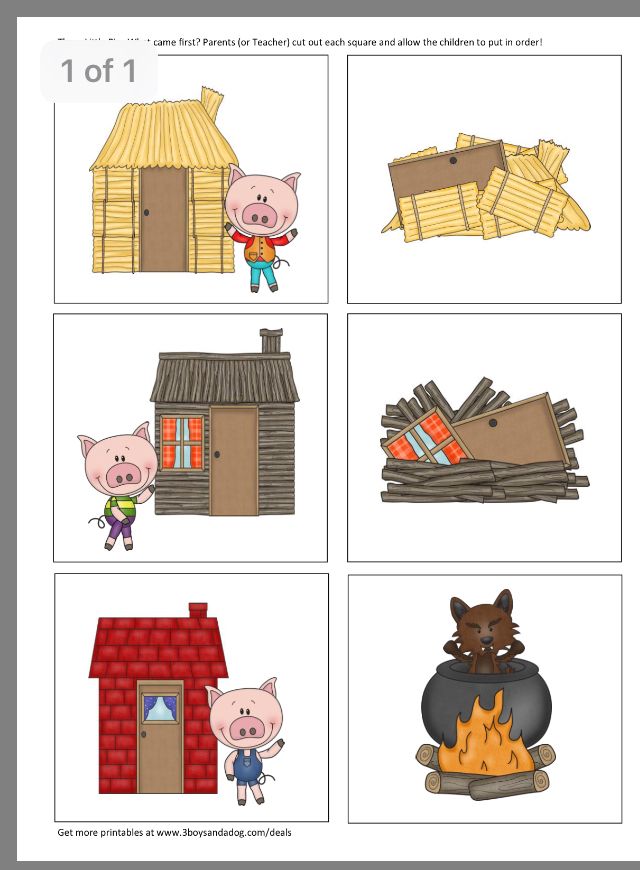
— What animal are you talking about? - Nuf-Nuf asked Naf-Naf.
- I'm talking about the wolf! - answered Naf-Naf and laid another stone.
- Look how afraid he is of the wolf! - said Nif-Nif.
- He's afraid of being eaten! - added Nuf-Nuf. And the brothers cheered even more.
- What kind of wolves can be here? - said Nif-Nif.
- There are no wolves! He's just a coward! - added Nuf-Nuf. And they both began to dance and sing:
We are not afraid of the gray wolf,
Gray wolf, gray wolf!
Where do you go, stupid wolf,
Old wolf, dire wolf?
They wanted to tease Naf-Naf, but he didn't even turn around.
- Let's go, Nuf-Nif, - said then Nif-Nif. “We have nothing to do here! And two brave brothers went for a walk. On the way they sang and danced, and when they entered the forest, they made such a noise that they woke up the wolf, who was sleeping under a pine tree.
— What's that noise? - An angry and hungry wolf grumbled with displeasure and galloped to the place where the squealing and grunting of two stupid little piglets could be heard.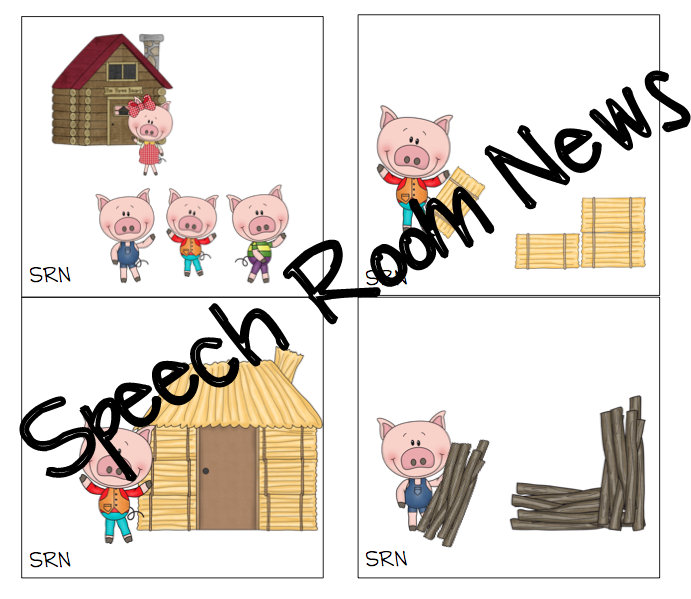
- What kind of wolves can be here! - said at that time Nif-Nif, who saw wolves only in pictures.
- Here we will grab him by the nose, he will know! added Nuf-Nuf, who also had never seen a live wolf.
And the brothers rejoiced again and sang:
We are not afraid of the gray wolf,
Gray wolf, gray wolf!
Where do you go, stupid wolf,
Old wolf, dire wolf?
And suddenly they saw a real live wolf!
He stood behind a large tree, and he had such a terrible look, such evil eyes and such a toothy mouth that a chill ran down Nif-Nif and Nuf-Nuf's backs and thin tails trembled finely. The poor pigs couldn't even move for fear.
The wolf prepared to jump, snapped his teeth, blinked his right eye, but the piglets suddenly came to their senses and, screeching throughout the forest, rushed to their heels. They have never run so fast before! Flashing with their heels and raising clouds of dust, they each rushed to their home.
Nif-Nif was the first to reach his thatched hut and barely managed to slam the door in front of the wolf's very nose.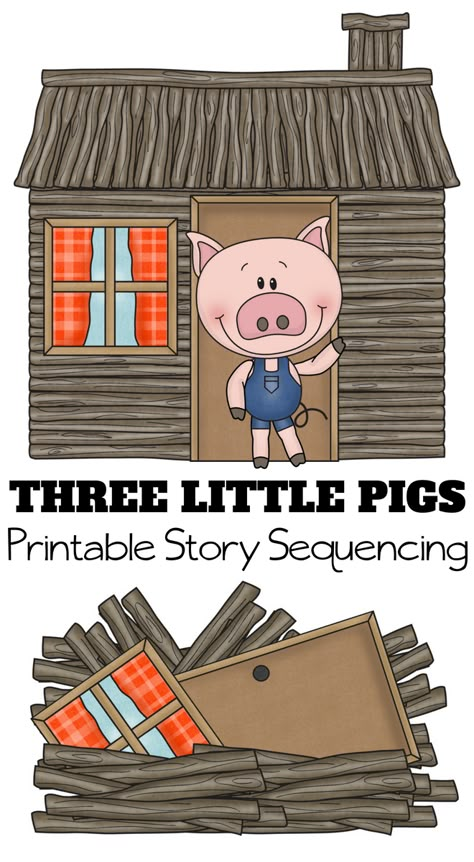
— Unlock the door now! the wolf growled. "Or else I'll break it!"
— No, — grunted Nif-Nif, — I won't unlock it!
The breath of a terrible beast was heard outside the door.
— Unlock the door now! the wolf growled again. “Otherwise I’ll blow so hard that your whole house will fly apart!”
But Nif-Nif, out of fear, could no longer answer anything. Then the wolf began to blow: "F-f-f-w-w-w!"
Straws flew from the roof of the house, the walls of the house shook.
The wolf took another deep breath and blew a second time: "F-f-f-w-w-w!"
When the wolf blew for the third time, the house blew in all directions, as if it had been hit by a hurricane. The wolf snapped his teeth in front of the little piglet's snout.
But Nif-Nif deftly dodged and rushed to run, in a minute he was already at the door of Nuf-Nuf.
As soon as the brothers had locked themselves in, they heard the wolf's voice:
— Well, now I'll eat you both!
Nif-Nif and Nuf-Nuf looked at each other in fear.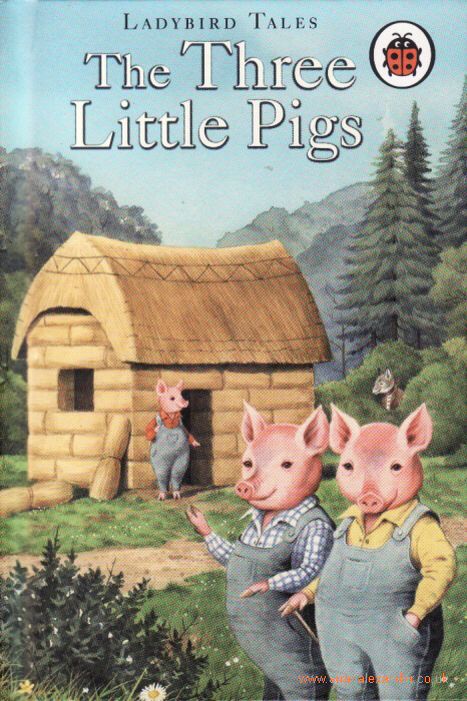 But the wolf was very tired and therefore decided to go for a trick.
But the wolf was very tired and therefore decided to go for a trick.
- I changed my mind! he said so loudly that he could be heard in the house. “I won’t eat those skinny piglets!” I better go home!
Did you hear? - Nif-Nif asked Nuf-Nif. He said he won't eat us! We are skinny!
— This is very good! - Nuf-Nuf said and immediately stopped trembling.
The brothers became very cheerful, and they sang as if nothing had happened:
We are not afraid of the gray wolf,
Gray wolf, gray wolf!
Where do you go, stupid wolf,
Old wolf, dire wolf?
And the wolf didn't even think of leaving. He just stepped aside and hunkered down. He was very funny. He had a hard time keeping himself from laughing. How cleverly he deceived two stupid little pigs!
When the pigs were completely calm, the wolf took the sheep's skin and cautiously crept up to the house. At the door, he covered himself with skin and knocked softly.
Nif-Nif and Nuf-Nuf were very frightened.
Who is there? they asked, their tails shaking again.
- It's me, me, poor little sheep! the wolf squeaked in a thin, alien voice. - Let me spend the night, I strayed from the herd and very tired!
— Let me in? the good Nif-Nif asked his brother.
- You can let the sheep go! Nuf-Nuf agreed. - A sheep is not a wolf!
But when the pigs opened the door, they saw not a sheep, but the same toothy wolf. The brothers slammed the door and leaned on it with all their might so that the terrible beast could not break into them.
The wolf got very angry. He failed to outsmart the pigs. He threw off his sheepskin and growled:
— Well, wait a minute! There will be nothing left of this house!
And he began to blow. The house leaned a little. The wolf blew a second, then a third, then a fourth time.
Leaves were falling from the roof, the walls were trembling, but the house was still standing.
And only when the wolf blew for the fifth time, the house staggered and collapsed.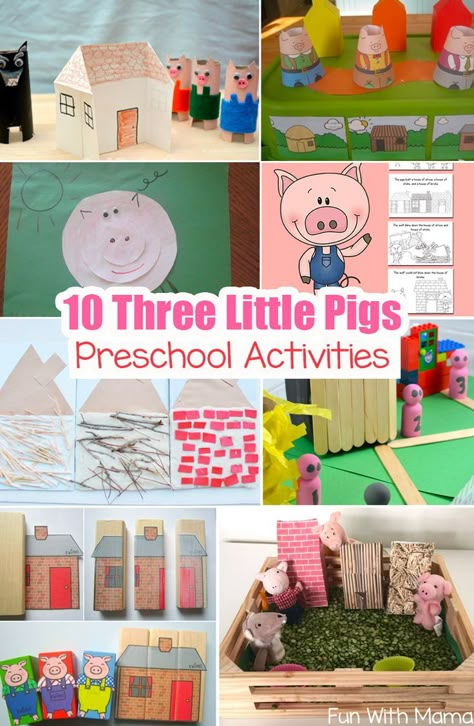 Only one door still stood for some time in the middle of the ruins.
Only one door still stood for some time in the middle of the ruins.
The piglets ran away in terror. Their legs were paralyzed with fear, every bristle trembled, their noses were dry. The brothers rushed to the house of Naf-Naf.
The wolf overtook them with huge leaps. Once he almost grabbed Nif-Nif by the hind leg, but he pulled it back in time and added speed. The wolf stepped up too. He was sure that this time the piglets would not run away from him.
But he was out of luck again.
The piglets quickly rushed past a large apple tree without even hitting it. But the wolf did not have time to turn and ran into an apple tree, which showered him with apples. One hard apple hit him between the eyes. A large lump jumped up on the wolf's forehead.
And Nif-Nif and Nuf-Nuf, neither alive nor dead, ran up to the house of Naf-Naf at that time.
Brother let them into the house. The poor piglets were so frightened that they could not say anything. They silently rushed under the bed and hid there. Naf-Naf immediately guessed that a wolf was chasing them. But he had nothing to fear in his stone house. He quickly bolted the door, sat down on a stool and sang loudly:
Naf-Naf immediately guessed that a wolf was chasing them. But he had nothing to fear in his stone house. He quickly bolted the door, sat down on a stool and sang loudly:
No animal in the world,
Cunning animal, terrible animal,
Won't open this door,
This door, this door!
But just then there was a knock on the door.
Who is knocking? Naf-Naf asked in a calm voice.
- Open without talking! came the rough voice of the wolf.
- No matter how! And I don't think so! - Naf-Naf answered in a firm voice.
— Oh, yes! Well, hold on! Now I'll eat all three!
- Try it! - answered Naf-Naf from behind the door, not even getting up from his stool. He knew that he and his brothers had nothing to fear in a solid stone house.
Then the wolf sucked in more air and blew as hard as he could! But no matter how much he blew, not even the smallest stone moved.
The wolf turned blue from the effort.
The house stood like a fortress.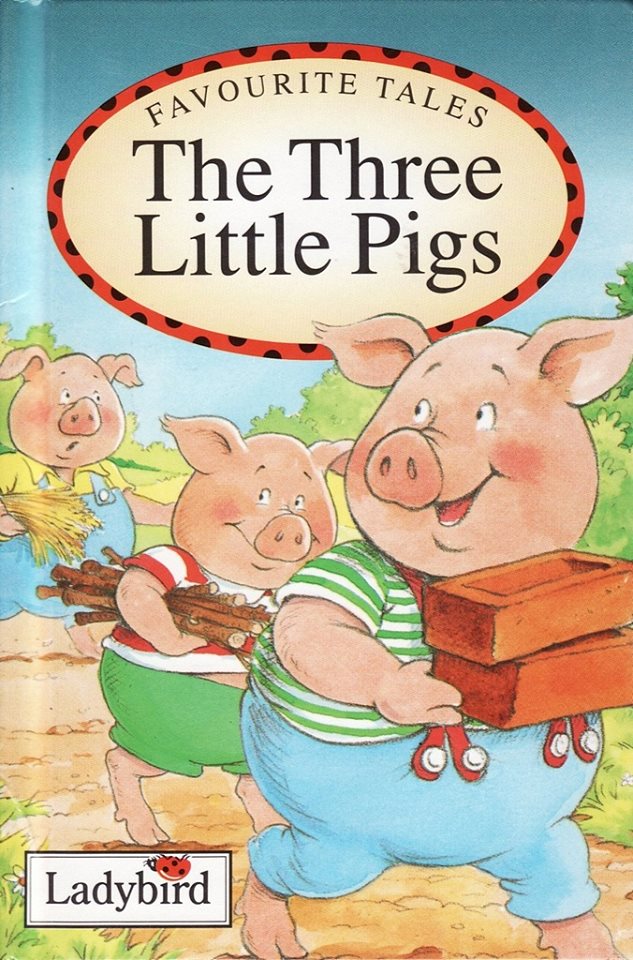 Then the wolf began to shake the door. But the door didn't budge either.
Then the wolf began to shake the door. But the door didn't budge either.
The wolf, out of anger, began to scratch the walls of the house with his claws and gnaw the stones from which they were built, but he only broke off his claws and ruined his teeth. The hungry and angry wolf had no choice but to get out. But then he raised his head and suddenly noticed a large, wide chimney on the roof.
- Yeah! Through this pipe I will make my way into the house! the wolf rejoiced. He carefully climbed onto the roof and listened. The house was quiet. “I’ll still have a snack today with fresh piglet,” the wolf thought, and, licking his lips, climbed into the pipe.
But as soon as he began to descend the pipe, the piglets heard a rustle. And when soot began to pour on the lid of the boiler, smart Naf-Naf immediately guessed what was the matter. He quickly rushed to the cauldron, in which water was boiling on the fire, and tore off the lid from it.
- Welcome! - said Naf-Naf and winked at his brothers; Nif-Nif and Nuf-Nuf had already completely calmed down, and, smiling happily, looked at their smart and brave brother.
The piglets didn't have to wait long.
Black as a chimney sweep, the wolf flopped right into the boiling water.
His eyes popped out on his forehead, all his hair stood on end.
With a wild roar, the scalded wolf flew into the chimney back to the roof, rolled down it to the ground, rolled four times over his head, rode on his tail past the locked door and rushed into the forest.
And the three brothers, the three little pigs, looked after him and rejoiced that they had so cleverly taught the evil robber a lesson.
And then they sang their cheerful song:
You'll get around half the world,
You'll get around, you'll get around,
You won't find a better home,
You won't find it, you won't find it!
No animal in the world,
Cunning beast, terrible beast,
Won't open this door,
This door, this door!
The wolf from the forest will never,
Never, never,
Will not return to us here,
To us here, to us here!
Since then, the brothers began to live together under one roof.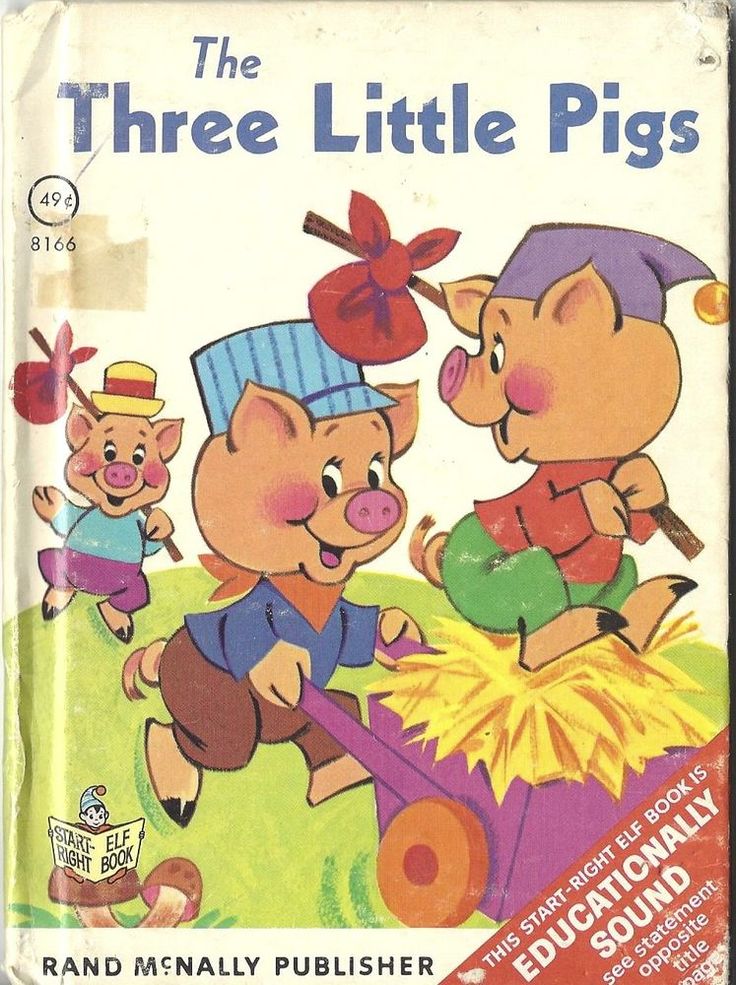
That's all we know about the three little pigs - Nif-Nif, Nuf-Nuf and Naf-Naf.
Gyula Urban. The envious piggy bank of Shampoosli. Polest-fairy tale
Page 1 || Page 2
author. The Three Little Pigs, English fairy tale
In the magical and so bewitching world of a kind children's fairy tale, real images are intertwined with fantastic ones, only here good always triumphs over evil, everyone lives happily ever after. It is with the help of this magical world that it is easiest to form the correct concepts of kindness, truth, fidelity and love in a child. Without fairy tales, childhood would not be so amazing. Without fairy tales, it simply loses its attractiveness and magic.
A good fairy tale never dies. It is passed from mouth to mouth, changing a little, but still carries a spark of kindness in the open hearts of kids.
One of the most famous fairy tales in the world is the English folk tale "The Three Little Pigs". Yes, this is an English fairy tale, although many mistakenly consider it to be Slavic folklore.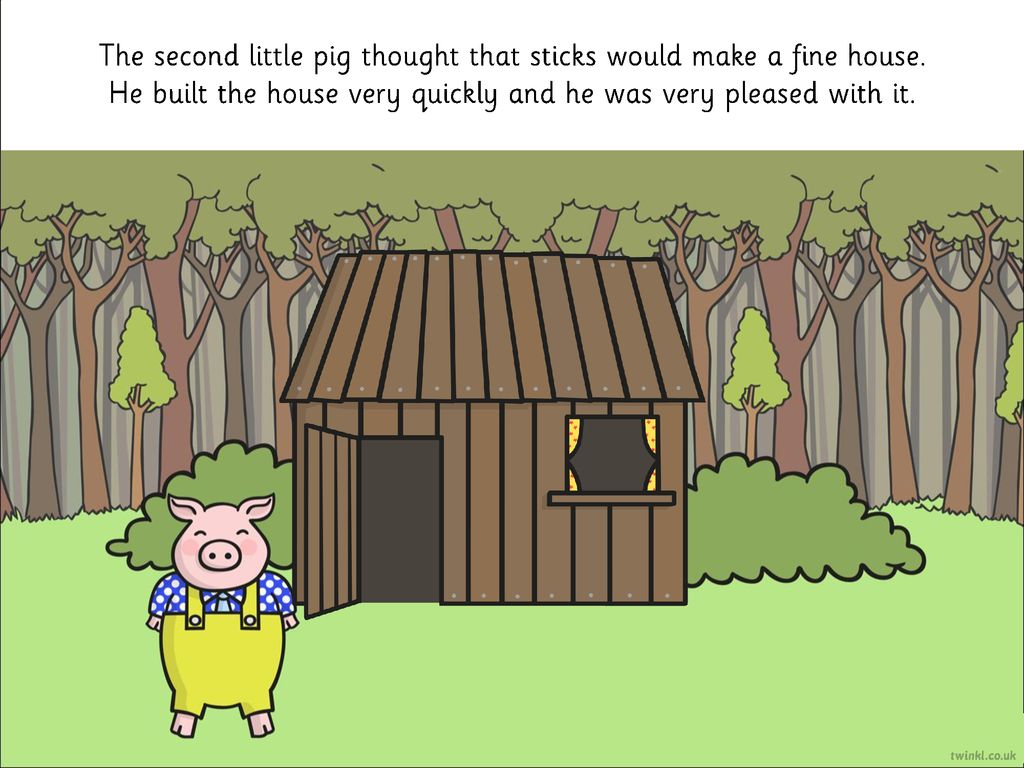 Interestingly, some sources attribute the authorship of this work to specific individuals, and not only to the British. To whom? This is what we will find out now.
Interestingly, some sources attribute the authorship of this work to specific individuals, and not only to the British. To whom? This is what we will find out now.
Summary of everyone's favorite fairy tale
Three pig brothers - Nif-Nif, Nuf-Nuf and Naf-Naf - had a fun summer, walking a lot, lying on the grass and enjoying the sunlight. But smart Naf-Naf at the end of summer reminded the brothers that it was time to think about housing for the winter. Nif-Nif and Nuf-Nuf were too lazy to start building a house for themselves, they still enjoyed a carefree life, while smart Naf-Naf was already working on a home. With the first frost, they set to work. Nif-Nif built himself a frail house of straw, and Nuf-Nuf's dwelling was made of thin rods. Such huts could not protect not only from the winter cold, but also from the wolf, who was so eager to eat these pink and plump piglets. He had no problem blowing away (and thereby destroying) Nif-Nif's thatched house, which then tried to hide in a dwelling made of Nuf-Nuf's rods.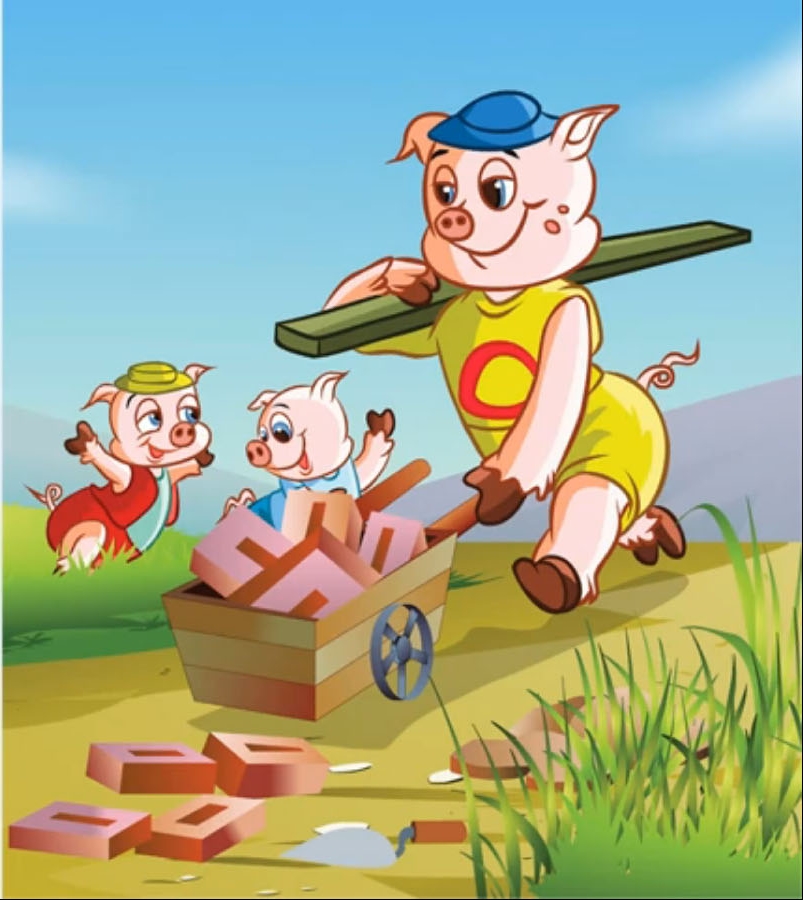 But this house was also destroyed. Only thanks to the fact that Naf-Naf built a house of stone, the pigs were able to protect themselves from the evil wolf, but he tried to climb through the chimney, but still good defeated evil, and the pigs remained alive.
But this house was also destroyed. Only thanks to the fact that Naf-Naf built a house of stone, the pigs were able to protect themselves from the evil wolf, but he tried to climb through the chimney, but still good defeated evil, and the pigs remained alive.
Sharp question of authorship
I wonder who the real author is? The Three Little Pigs and authorship are widely discussed today. After all, many have known this tale since childhood, as it is one of the easiest to understand. It is to the taste of even the smallest children, therefore it is often called Russian folk. But for Russian children, not so long ago, parents began to read The Three Little Pigs. The author of the book with the translation of this English fairy tale is none other than the famous Sergei Mikhalkov. Interestingly, his version is slightly different from the original. After all, only the Russian version of the tale tells that smart pigs simply taught the wolf a lesson. If we compare this tale with the original, that is, with the original work “The Three Little Pigs” (the author of the tale is the people), then there the cunning pigs boiled the impudent wolf in a cauldron when he tried to get through the chimney into the house of Naf-Naf.
Such cruelty of the folklore version is inherent not only in this particular fairy tale, in the original many works (not only English, but also other peoples) were quite cruel, but after they were changed and modernized to the form in which they have already come to us. And thus, the three little pigs (the author of the English fairy tale is the English people) have already become not so bloodthirsty and have not boiled the wolf, but simply let them go.
A little more about the Russian version of the fairy tale
Mikhalkov is an excellent author. "Three Little Pigs" - a fairy tale that he translated in the distant 1936 year. It was then that “The Tale of the Three Little Pigs” was published under his name, which immediately became beloved and widely known. It is interesting that not only this work of Mikhalkov was created on the basis of another fictional story (history, fairy tale), but he knew how to add such colors to them, after which the characters came to life in a new way.
Mikhalkov's fairy tale was translated into English68 in England. It is noteworthy that the German edition of Mikhalkov's Three Little Pigs, which was published in 1966, served as the primary source for this translation. A similar fact confirms that Mikhalkov really created this fairy tale, that is, he is the author. The Three Little Pigs is a work that many attribute to his pen. In extreme cases, he is the author of the most popular and interesting version of this tale.
More options for possible authors
Who wrote the fairy tale "The Three Little Pigs"? English author or not? You can hear such an answer, according to which the Grimm brothers are still considered the authors of this fairy tale. But this is absolutely the wrong answer. Confirmation of this can be found in the book "Nursery Rhymes and Stories" (this is where the first printed version of this tale entered), which was published in London back in 1843. At this time, the Brothers Grimm were already well known and would hardly have allowed this work to be printed under their own name.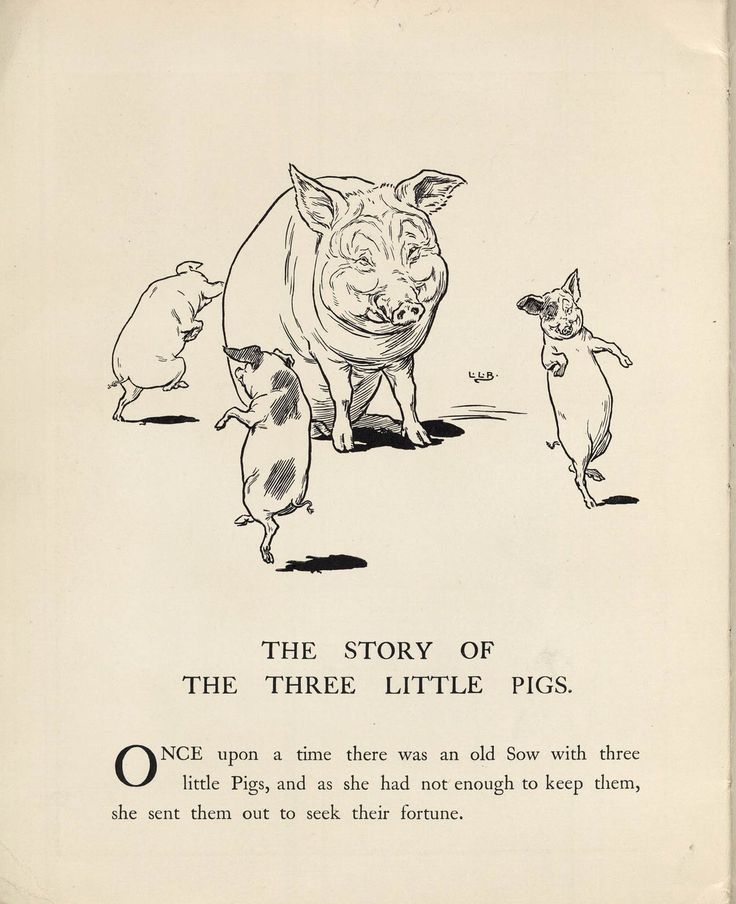 On the other hand, it does not matter at all who the author is, The Three Little Pigs is just a great fairy tale.
On the other hand, it does not matter at all who the author is, The Three Little Pigs is just a great fairy tale.
Interpretation of the fairy tale in cartoons
Nif-Nif, Nuf-Nuf and Naf-Naf were so fond of children that their story was even filmed in cartoons. The most famous options for us are, of course, Disney and from the Soyuzmultfilm studio. And here the question of who wrote the fairy tale "The Three Little Pigs" has already ceased to be important. The author of each individual film adaptation made his own adjustments, thereby slightly changing the tale, making it more interesting for children. The main thing is that, despite the fact that both versions of the fairy tale were filmed in the last century, they still remain interesting for new generations.
The fairy tale that became the basis of Tex Avery's provocative cartoon
The world-famous cartoonist Tex Avery managed to give a new meaning to the children's fairy tale. In his caricature version of the cartoon, which was created during the Second World War, the “evil and terrible gray wolf” was the image of Hitler. The “countries” that have agreed to sign the non-aggression pact are stupid Nif-Nif and Nuf-Nuf. And only "Captain Pig" was preparing for a possible attack by the "wolf". So we can say that Tex Avery is also the one who wrote The Three Little Pigs. The author here already simply created a story for adults, not for children. After that, he wrote the continuation of this story "pigs".
The “countries” that have agreed to sign the non-aggression pact are stupid Nif-Nif and Nuf-Nuf. And only "Captain Pig" was preparing for a possible attack by the "wolf". So we can say that Tex Avery is also the one who wrote The Three Little Pigs. The author here already simply created a story for adults, not for children. After that, he wrote the continuation of this story "pigs".
A fairy tale worth reading to children
In this fairy tale we have good and bad heroes. Kind, of course, piglets, we sympathize with them. After all, the evil wolf wants to eat them. But at the same time, the piglets are also stupid (Nif-Nif and Nuf-Nuf), because they hope that the frail houses will save them, and if it were not for the smart Naf-Naf, they would not have survived. Only by uniting, the brothers were able to defeat the wolf, and even teach him a lesson so that he would never try to eat them again.
Although this tale is considered by many to be primitive, it is still exactly the kind of work that should be told to children all over the world.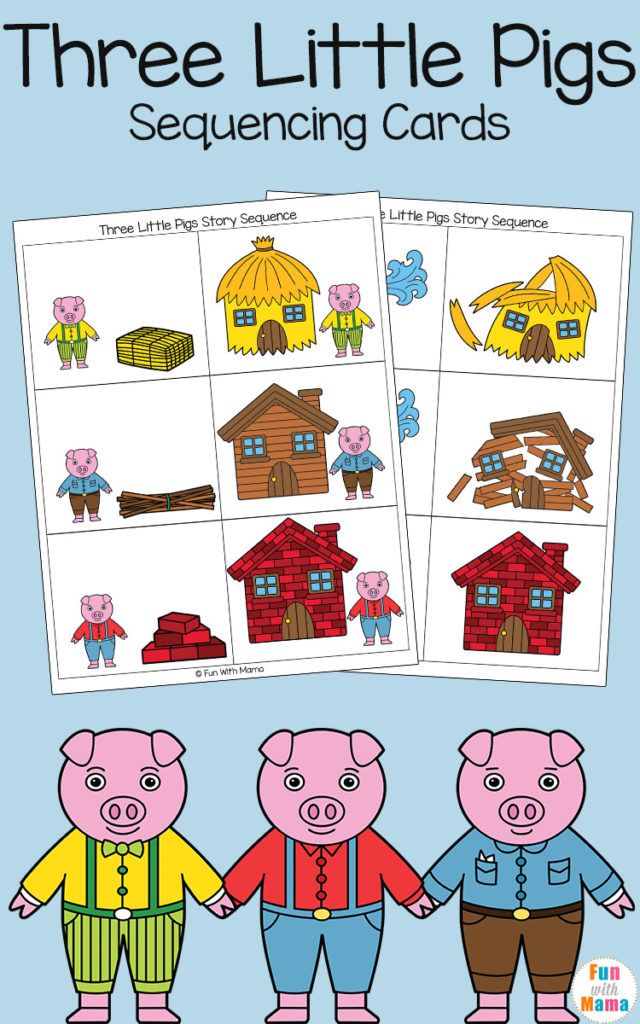 Indeed, regardless of who wrote The Three Little Pigs, the author wanted to convey the main essence - you must always prepare for the "winter" on time, that is, be prepared for bad times and start preparing in advance, and the family is the main value, only together with the family you can even defeat the wolf. Indeed, only in the form of a fairy tale can such serious life concepts be conveyed to young children, and only in this form will they be perceived by them. It is important to correctly answer the questions that children may ask after listening to or reading this work, so that they understand the whole point. And it’s better to give the kids the option in which the wolf is not killed, because after that the piglets (like heroes) already cease to be kind. It is better that they only punish him for their desire to eat them, because this is the wrong thing to do. And young parents should not be lazy to re-tell this particular tale. If she is interested in the baby, then he really likes it.
Indeed, regardless of who wrote The Three Little Pigs, the author wanted to convey the main essence - you must always prepare for the "winter" on time, that is, be prepared for bad times and start preparing in advance, and the family is the main value, only together with the family you can even defeat the wolf. Indeed, only in the form of a fairy tale can such serious life concepts be conveyed to young children, and only in this form will they be perceived by them. It is important to correctly answer the questions that children may ask after listening to or reading this work, so that they understand the whole point. And it’s better to give the kids the option in which the wolf is not killed, because after that the piglets (like heroes) already cease to be kind. It is better that they only punish him for their desire to eat them, because this is the wrong thing to do. And young parents should not be lazy to re-tell this particular tale. If she is interested in the baby, then he really likes it.